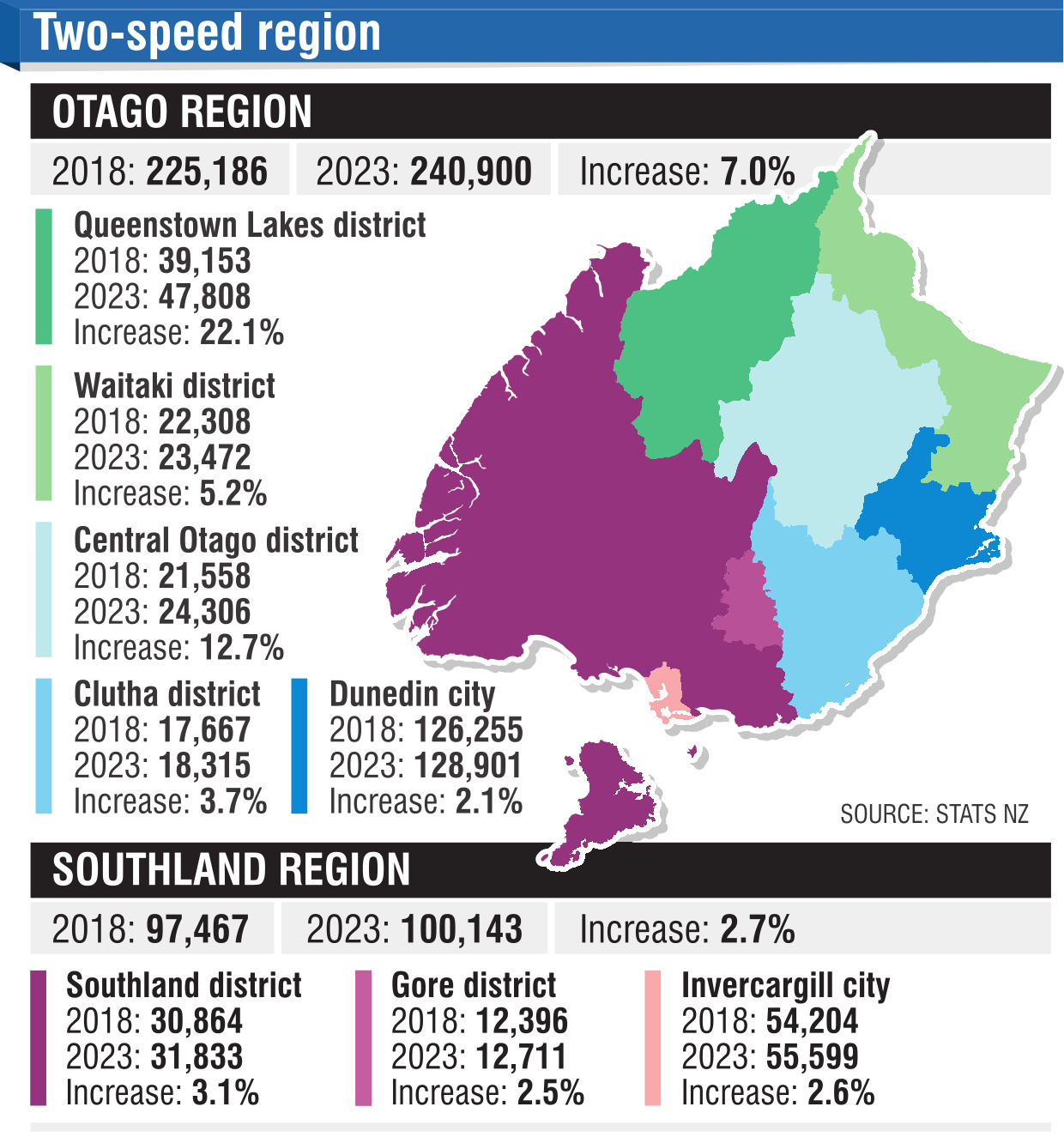
The revelation comes from the latest 2023 Census results, which showed in the past five years, the Queenstown Lakes district’s population has grown 22% to 47,800 — the second-highest growth rate in the country behind the Selwyn district on 29%.
Growth in the Central Otago district was similarly rapid, up by 12.7% to 24,306, the fifth-highest in the country, and more than double the national average of 6.3%.
In contrast the South had three of the five areas with the lowest growth rates.
Dunedin’s growth rate slowed 2.1% to 128,901. Only Wellington (0.01%) and the Chatham Islands (-7%) were lower.
Other districts suffering low growth included Gore, which grew 2.5% to 12,711 (the fourth lowest in the country) and Invercargill City, which grew 2.6% to 55,599 (the fifth lowest).
Queenstown Lakes District Mayor Glyn Lewers said the district’s high growth rate came as no surprise, but brought its own challenges.
"As our recent statements about the provision of local healthcare services show, we cannot achieve all of this ourselves and hence I’ll continue to advocate ... for an appropriate level of support from central government."
Central Otago District Mayor Tim Cadogan said the council had anticipated this growth, and planned to address some of its challenges.
This was through initiatives such as plan changes which encouraged higher-density development.
There were also infrastructural challenges to meet "the growth we’ve got, and the growth we know is coming", he said.
"I don’t think the government can continue to ignore these growth rates — and that’s not even counting our non-resident population."

"It seems that other parts of New Zealand have been similarly affected.
"However, Dunedin continues to attract people and we are well placed to cater for growth. We expect to see high-to-medium growth in Dunedin over the coming years.
"I’m confident our city will continue to succeed."
Invercargill Mayor Nobby Clark was not surprised by the result.
"I think our younger people head off to university ... We don’t have a lot of net growth.
"Hopefully, the government’s change of policy will free up some more international students. Some study and go elsewhere, but some of them also stay."
Mr Clark said economically, there was a lot of opportunity for Invercargill and Southland.
"The key is economic growth. In the short-to-medium term, we’ve got some very large projects coming up such as Southern Green Hydrogen ... Certainly agriculture is very big for us. We have three applications for salmon farming going through the fast-track process.
"The final growth area is around data. We’ve got a databank scheduled to be built here. These will all create jobs."
Gore District Mayor Ben Bell said he was reluctant to draw too many conclusions until the council could analyse the census results.
"It is heartening to see the district’s population hasn’t decreased.
"In fact, it is worth noting that while the population growth may appear low at 2.5%, it is on a par and even better than some metropolitan areas such as Invercargill and Dunedin."












